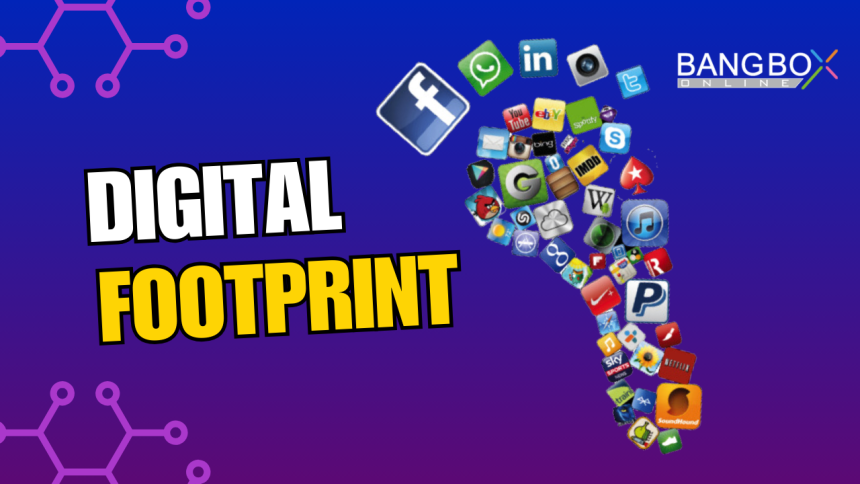
Navigating the Digital World: Digital Footprint
In today's digital age, understanding and managing your digital footprint is not just a matter of privacy but also reputation and security. By proactively curating your online presence and being mindful of your digital actions, you can navigate the digital world with confidence and control.
In a forever-connected world, everything is just a click away. One cannot hope to go without creating an impression or a “digital footprint” for oneself. Whether you are the one who uses the internet all day every day or the occasional emailer. But wait, what is this phrase anyway, and why do you need to notice it? Here in this tutorial, I’ll explain what a digital footprint is, why it matters, and give you some tips on how to check and control your online identity.
What’s a digital footprint?
What does digital footprint mean? Digital footprint means they track the data you leave while surfing the internet. It is a comprehensive list of all the things you have seen, done, or interacted with online. Each time you open up the internet, send an email, post on social media, and buy things online, you leave behind evidence to build your digital footprint.
Components of a Digital Footprint
Social Media Activity:
Every single post, comment, like, or share you make on Facebook, Instagram, Twitter, and LinkedIn is part of your digital presence.
Web Browsing History:
All the websites that you visit, what you see, and even what you type into Google searches all add up to create your digital footprint.
Online Purchases:
Your online transactions such as shopping, online subscriptions, and your card information (e.g., credit) are part of the digital footprint.
Email Correspondence:
E-mails including the attachments that you exchange include your digital footprint.
Mobile Apps:
Other traces left include interactions with mobile apps, location data, app usage, and in-app purchases.
Online Registrations:
When you sign up online, create an account, log into a website or forum, or subscribe to a newsletter they collect data that’s linked to identifying information about you and contribute more data to your digital footprint.
Public Records:
Your digital footprint is all the information that’s out there in the public domain about you, e.g. your education and profession.
What are the consequences of a digital footprint?
Knowing what you leave behind online isn’t just nice to know. it will make a difference, good or bad. Let's delve into these implications:
1. Online Reputation:
Anything and everything you do that leaves a trace on the internet leaves your digital footprint. Future employers, coworkers, friends, and even romantic partners will look at your digital footprint to consider who you are.
2. Privacy Concerns:
An extensive online track is something that could be utilized as momentum to an individual’s protection, worries concerning secrecy, and information insurance.
3. Cybersecurity Risks:
The more you control the greater the risks, including identity theft, hacking, or stealing data.
4. Targeted Advertising:
Businesses evaluate their internet “footprint” to send out targeted ads. This is handy but can compromise your privacy as well.
5. Future Opportunities:
Having a polished online image can help you get hired or find the right people for collaborative efforts.
6. Digital Legacy:
Your digital track may remain even long after your death, shaping the way people think about you or what they remember.
How to check and control your digital footprint?
Now that we know why a digital footprint is important, we need to know what to do, and how to check it. Here are some steps to get you started:
1. Google Yourself:
Search your name in the top most search engines i.e. Look into the search results and determine what details are out there on you.
2. Use Digital Footprint Checker:
There are many tools online that can help you check up on digital footprint checker what’s out there. Such tools often search through people’s social profiles, public records, and online mentions to generate a case history.
3. Check Your Social Media Settings:
Check and update the privacy options of your Social Media Accounts. To make visible what you want to see in your posts, your friends lists, and your information.
4. Review Your Online Accounts:
Check your old accounts once in a while. Close down any account you’re no longer using or don’t need.
5. Clean Up Your Social Media:
Un-tag yourself from photo posts and comments you do not wish related to your online identity.
6. Secure Your Online Accounts:
Use 2-factor authentication (2FA), and create complex unique passwords on all of your digital accounts to avoid others attaining entry.
7. Monitor Your Online Activity:
Watch your digital track. Keep your info to yourself, and think about what you post.
How to delete digital footprint?
While it's challenging to completely erase your digital footprint, you can take steps to remove your digital footprint checker-free:
1. Opt for Anonymity:
Use a VPN (Virtual Private Network) Hide your true IP address while you’re surfing online.
2. Use Privacy-Focused Search Engines:
Try search engines like DuckDuckGo which respect the user’s privacy and don’t log your queries.
3. Limit Social Media Usage:
Limit your interaction with social media and take yourself off any platform where you feel like you aren’t using it much.
4. Control Cookies and Tracking:
Change the setting in your browser where you can stop storing cookies and tracking tools that monitor you on the Net. it's very important to have an eye on browser activities so that you can remove your digital footprint which can be harmful in the future.
5. Encrypted Communication:
Encrypted messaging apps and email services will ensure your digital communication remains secure from snooping eyes.
Conclusion
Your digital footprint is the virtual image of yourself and recognizing how it affects you has become important in this day and age. Opportunities but also responsibilities and risks come with this benefit called globalization. Becoming aware of what is available on the internet about yourself (and taking control) will help protect your personal information, improve your online profile, and allow you to feel more comfortable maneuvering the digital universe. Recall that your online presence is a “legacy” left for the world, so take some time to plan and strategize how you want people to remember you based on your digital body of work.
Top Leather Care Products to Keep Your Leather Looking Like New
leather care products



